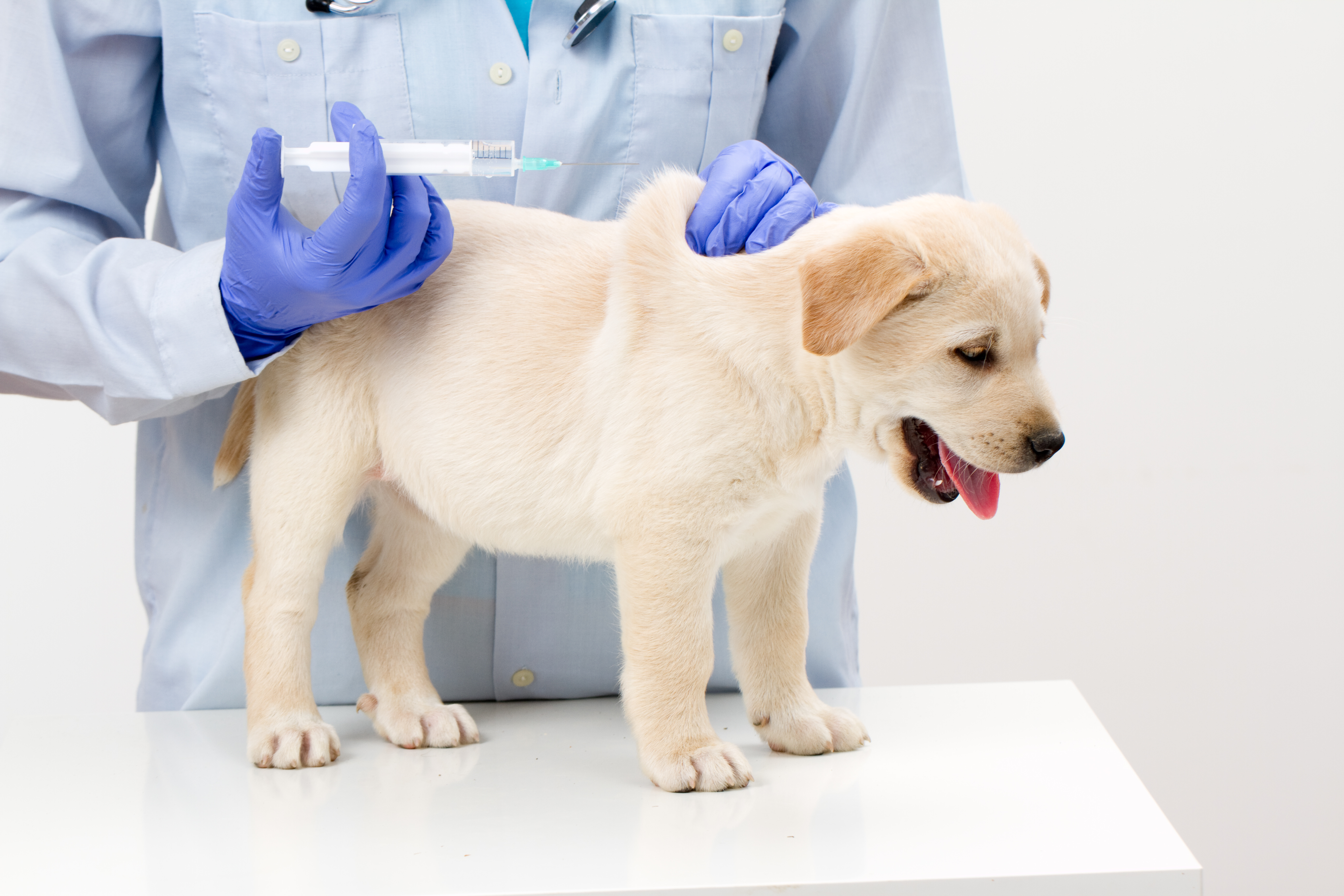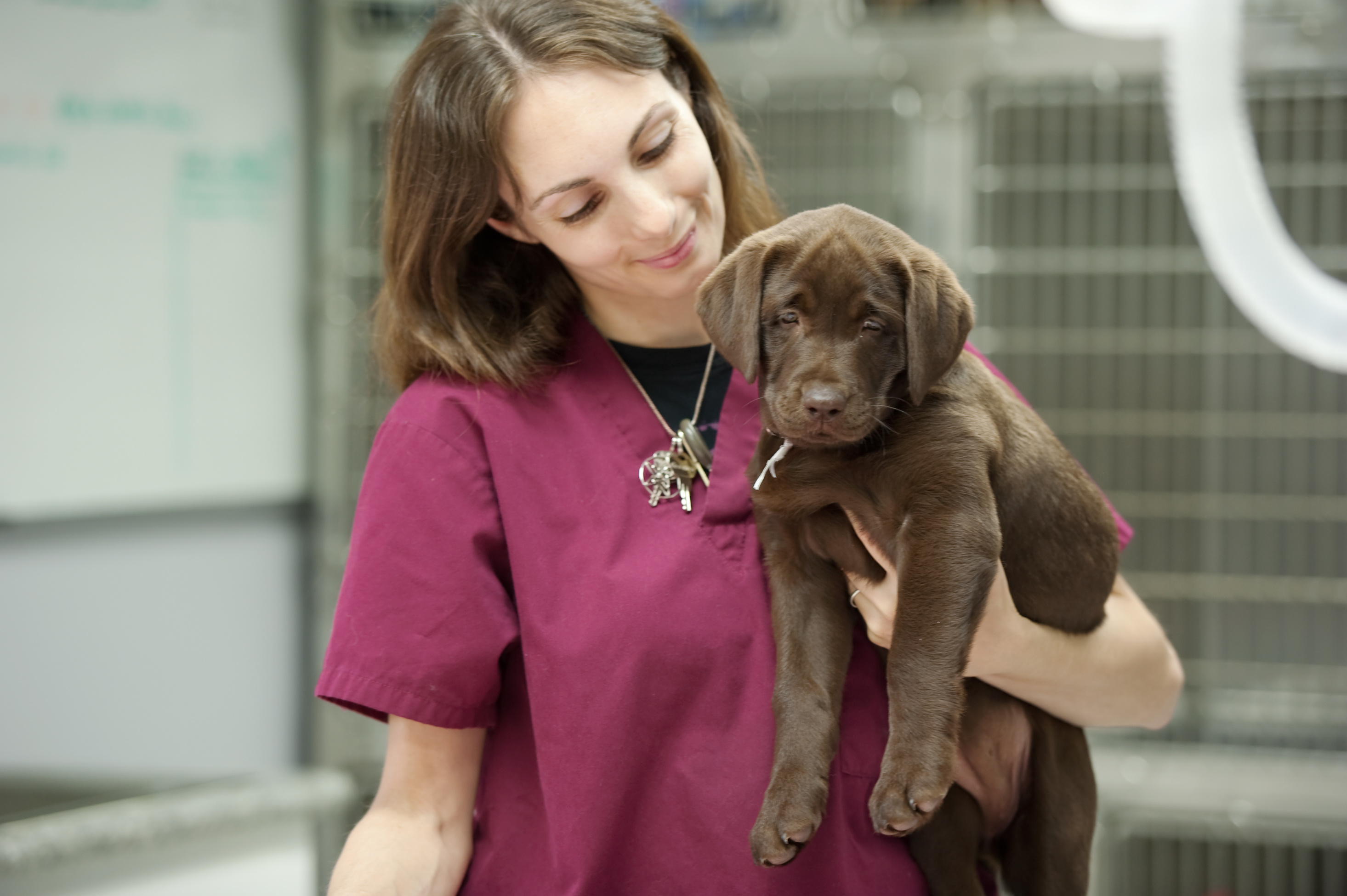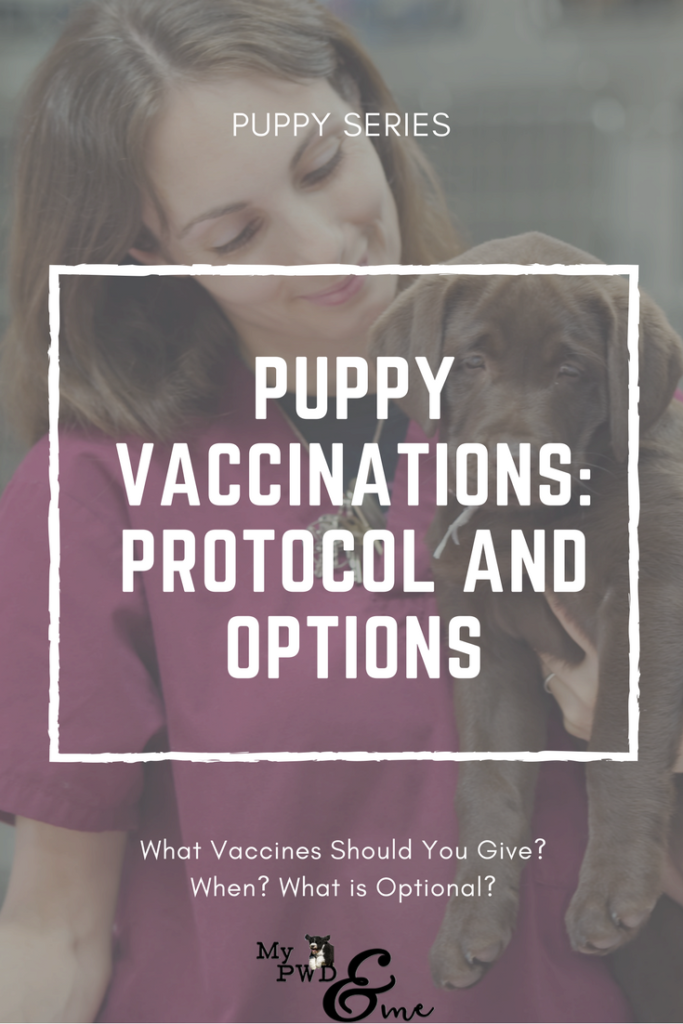Congratulations on your new addition! Now what? Let’s talk about vaccinations for your puppy. If this is your first puppy you might be looking for a veterinarian. Like everything, finding a good vet is paramount to the health of your dog. You may need to visit a few to make sure the environment works for you and your puppy.
I look for: cleanliness of the waiting room and exam rooms, professionalism and friendliness of the staff, as well as the veterinarians’ qualifications. It is my preference to stay with one vet at a practice but that isn’t always possible for everyone. I like this because they get to know me and my dog and are able to better recall what we have done for treatment.
Regardless of the vet you choose, make sure that you feel comfortable having frank conversations with them and you don’t feel railroaded into treatment plans. When it comes to vaccinations for your puppy this is super important.
Vaccinations for Your Puppy Recommended by AAHA
The current vaccination protocol recommended by the American Animal Hospital Association (AAHA) for puppies is:
- Receive Core Vaccinations of Canine Distemper Virus (CDV) with Parvovirus (CPV), Adenovirus-2 (CAV2), and Rabies
- If your puppy is under 16 weeks of age and over six weeks, they receive a dose of the core vaccine of every two to four weeks until they are 16 weeks old. Puppies in a high-risk environment (i.e. high incidence of CDV and/or exposure to dogs or contaminated environments) should receive another dose between 16 and 20 weeks.
- If your puppy is between 16 and 20 weeks when they receive their initial vaccine they will receive another doses two to four weeks apart.
- Puppies over 20 weeks old should be protected by a single dose.
 Vaccinate your puppy one year after the last dose in the initial vaccination series. Receive boosters every three years or longer. If you go longer you will want to titer your dog to make sure they have a reasonable protection of immunity against CDV, CPV, and CAV2
Vaccinate your puppy one year after the last dose in the initial vaccination series. Receive boosters every three years or longer. If you go longer you will want to titer your dog to make sure they have a reasonable protection of immunity against CDV, CPV, and CAV2- Administer the rabies vaccine no earlier than 12 weeks old with a second dose one year later. Depending on your location you may opt for a one year or three-year vaccine. State and Local requirements dictate how and when you give the rabies vaccine.
Now if you are like me you are thinking WOW that’s a lot of vaccinating for something so small. Particularly since many of the doses are the same regardless of weight. I know! A 3 pound puppy gets the same dose as a 100 pound dog. It’s true!
Are there any other options?
Yes! Dr. Jean Dodds from Hemopet has a vaccination protocol that is less frequent but just as effective. She only recommends Canine Distemper Virus (CDV) and Parvovirus (CPV). The first vaccination between nine and 10 weeks old, the second between 14 and 15 weeks, and the last at 18 weeks.

One year after the last vaccination is an optional booster of Canine Distemper Virus (CDV) and Parvovirus (CPV). If you plan on doing titers, this is strongly recommended because the puppies are in puberty and this helps assure protection.
When choosing not to do the optional booster, have a titer done. It is recommended to perform titers every three years for Canine Distemper Virus (CDV) and Parvovirus (CPV), or more often if preferred.
Other Vaccinations
There is a plethora of other vaccinations that you may or may not want to give. These include: Bordetella, Leptospira, Canine Lyme Disease, and Western Diamondback Rattlesnake.
In some cases, you may be forced to give them if you board your dog or they go to doggie day care.
In the case of Dr. Dodds Parainfluenza and Adenovirus are optional vaccinations.
If any of these diseases are common in your area you might want to vaccinate against them. As they are optional I would look into them seriously before giving them to your puppy or dog.
What should I do?
It depends on what you feel comfortable with, I am following Dr. Jean Dodds’ recommendations with Mr Magoo. I followed the veterinarian guidelines with my first dog and I know that led to some of the issues she had later in life. She was WAY over vaccinated.
With Miss Millie I followed the AAHA vaccination guideline when she was a puppy. After her one-year booster I have done titers since then.

With both Miss Millie and Mr Magoo I have had only one vaccine administered at each visit. There are too many potential side effects and those are increased when you do multiple vaccinations at one time. The AAHA allows multiple vaccines completed at the same time as long as they are in different locations of the body.
This is where it is important to be able to talk to your veterinarian about your preferences. In my case, they have gone out of their way to make sure they have the right vaccine in the office when I’m there. It has been amazing to see how much they care about my participation in my puppy’s wellness.
Like what you are reading? Check out the rest of our puppy series. Make sure to follow us on social media and sign up for our newsletter. We are always up to something fun.

Vaccinations for Your Puppy